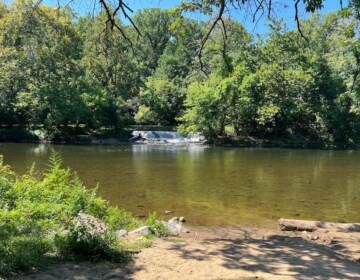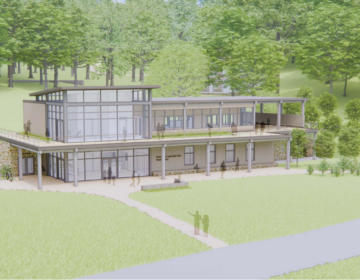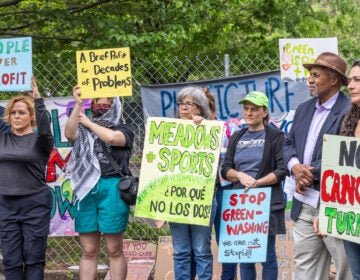Eagle-eyed Delaware hunter chances upon ‘holy grail’ of tree lovers — full-grown American chestnut
Adult chestnuts were long thought to be extinct in Delaware. A fungus decimated the species in the eastern United States in the early 1900s.
Listen 4:46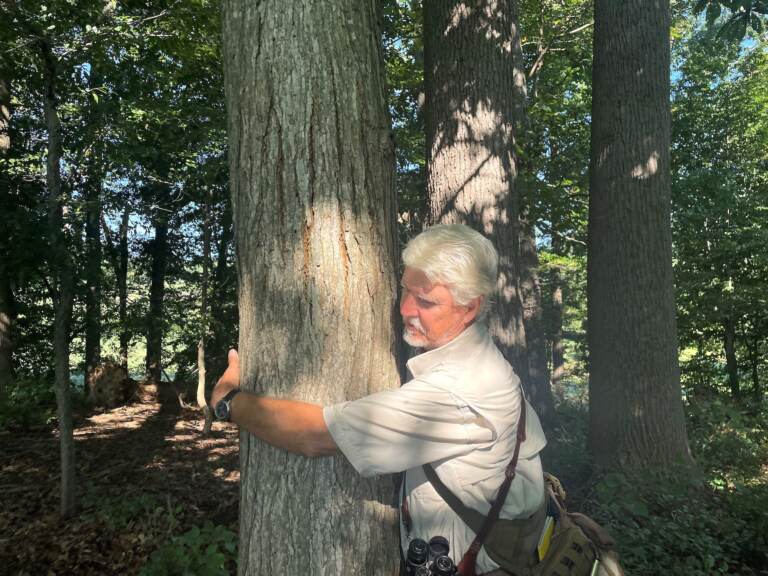
Jim White can barely get his long arms around the American chestnut found ina remote part of Coverdale Farm Preserve. (Cris Barrish/WHYY)
Jim White of the Delaware Nature Society leads the way as we splash through a stream and trudge up a hill through a thicket of brush to reach the top of Coverdale Farm Preserve.
There’s no trail or marker this deep in the dense woods in northern Delaware so the veteran biologist admits to being a little stumped when we arrive in a random grove of tall tulips and oaks, some felled by storms.
“Yeah, trying to find it,” White says. “It’s with all these other trees. And, you know, it’s not that distinct, not that different from some of the other trees. Because all you see is the trunk down in here.”
After a few minutes of searching, White hits paydirt.
“Oh here it is right here,’’ he exclaims. “Here it is.”
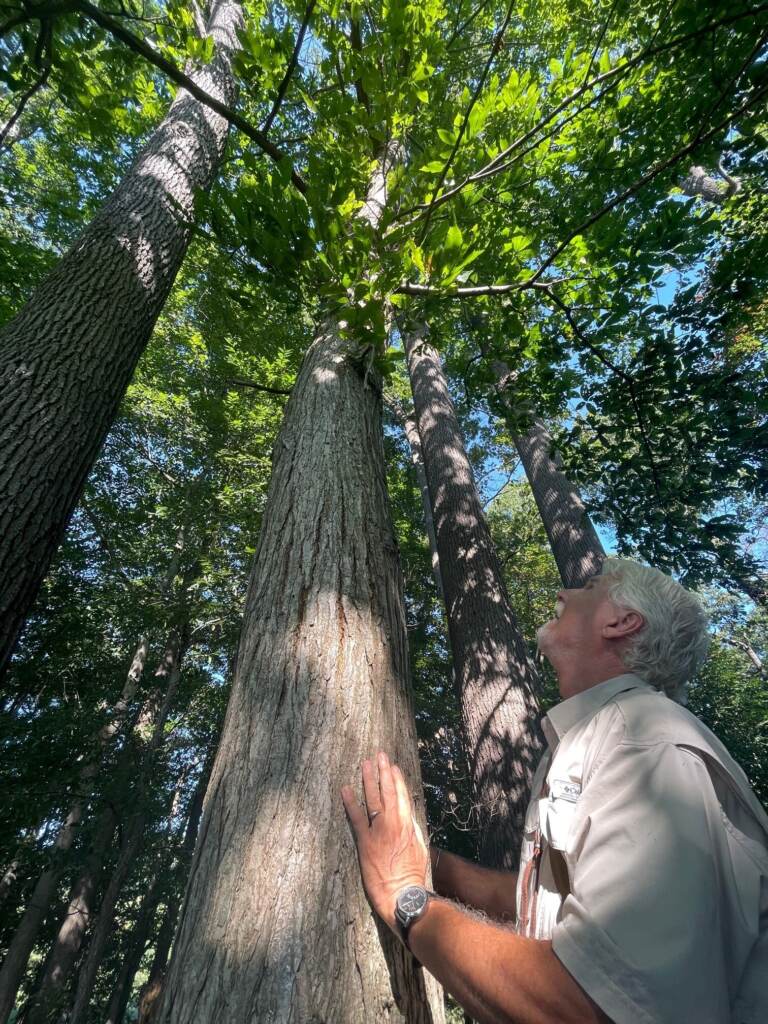
“It” is a 65-foot high American chestnut, with an 18-inch diameter. White is a tall man but he can barely wrap his hands around it.
The adult American chestnut, long thought to be extinct in Delaware, was discovered by a deer hunter with a sharp eye and an encyclopedic knowledge of local flora. The one White is hugging is the only one known to exist in the state; he calls it a “precious resource.”
White thinks about what this swath of woods in the rural Centreville area looked like in the early 1900s.
“This forest would have been 30% or more chestnut trees, American chestnut,’’ he says. “Of course, the blight came in at about that time when they started to bring the Chinese chestnuts over.”
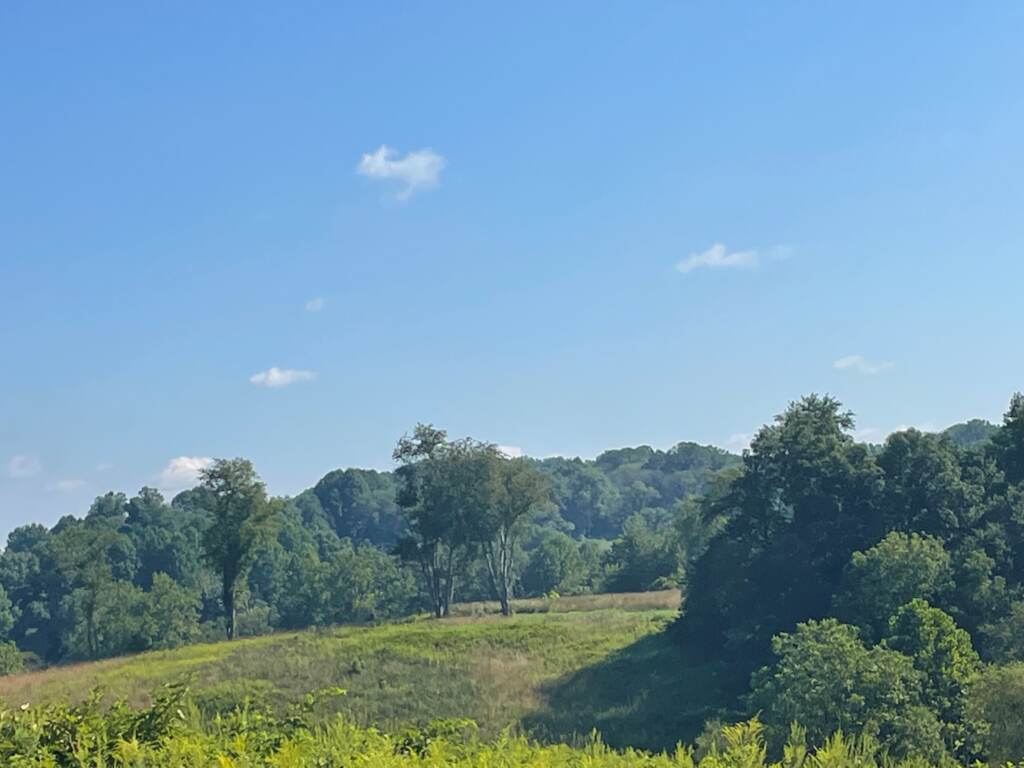
The “blight” is a parasitic fungus that decimated the American chestnut about a century ago, with up to 4 billion wiped out in the eastern United States.
The chestnut trees from China that were brought to America are resistant to the disease. But not the American version, which is considered functionally extinct.
Sara Fitzsimmons of the American Chestnut Foundation says that while there are thousands of adult trees across the country — most unseen by humans because they are amid dense, unreachable forest — about 85% of “the 430 million stems still on the landscape” are less than one inch in diameter.
“The great, great majority of American chestnuts that you find today throughout Pennsylvania, Virginia, North Carolina, Tennessee, and so on are small sprouts that are struggling for existence,’’ Fitzsimmons said. “They get the blight, they die back, they resprout, they get the blight, they die back, they resprout. They’re these tiny diseased things.”
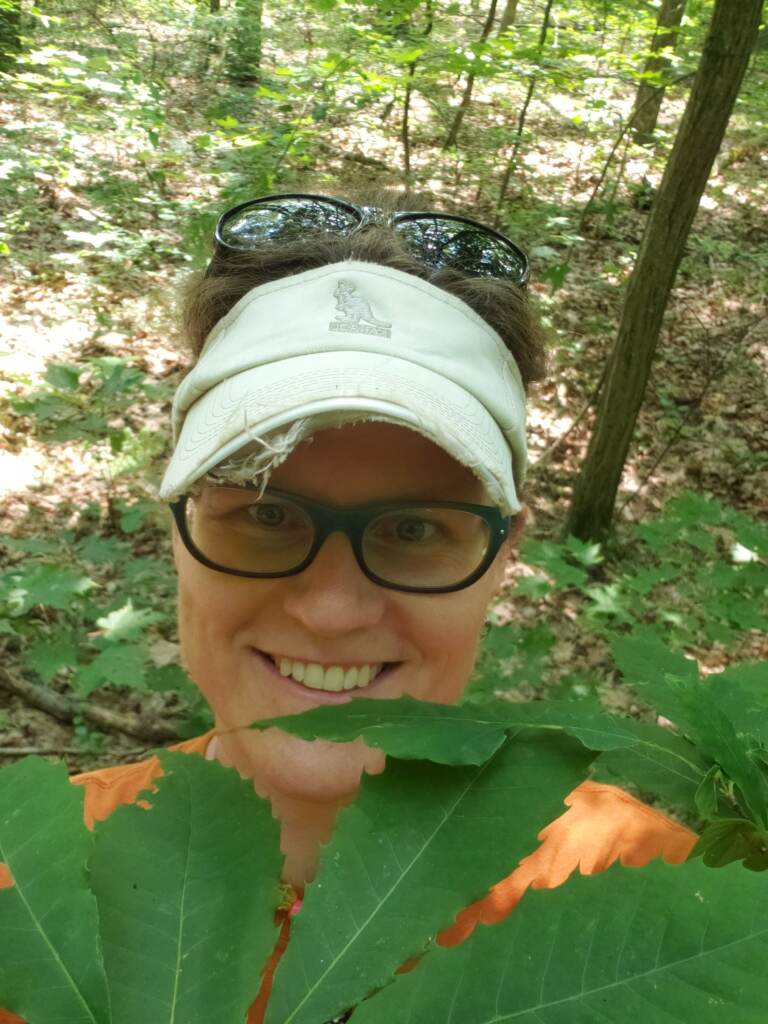
She calls the Delaware tree significant because the tree is bigger than 95% of the roughly 500 her group has documented. The largest in the group’s database are in Maine. One is 112 feet tall; another is 40 inches in diameter.
“And so a tree like you just visited is, I wouldn’t say rare, but it is unusual,’’ she said. ”It is unusual for the trees to escape being infected with the blight for that long.”
‘I’d never seen a live, mature, beautiful one’
If not for the hunter, the Delaware tree would not have been found on the 177-acre preserve.
The hunter is Bret Lanan, who has an encyclopedic knowledge of local flora and loves identifying plant species when he’s in the woods. Lanan’s father had taught him about the chestnuts being wiped out.
Lanan, 63, who has a degree in entomology but spent his career with General Motors, is now retired. But through his connections with the nature society, in 2019 he was invited to join the team that hunts deer on the Coverdale preserve to thin the herd annually.
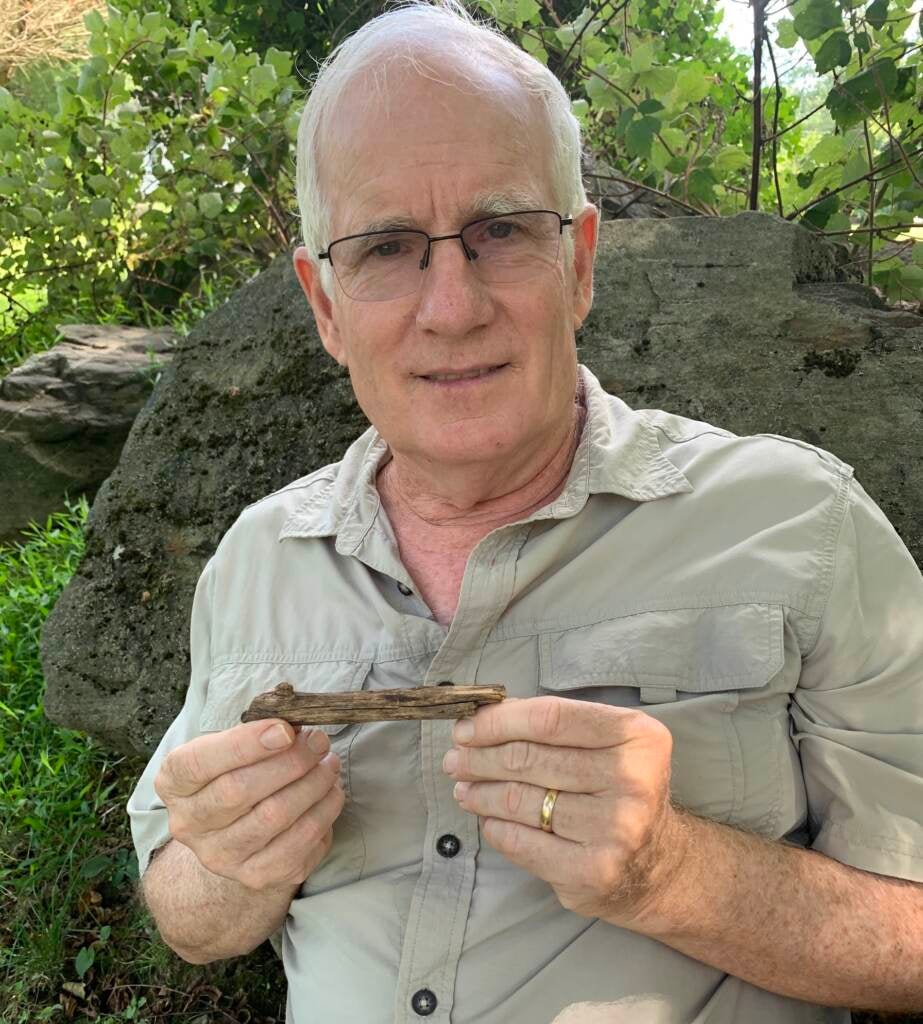
That September he was scouting the grounds for a spot to ambush unsuspecting deer.
“It was a beautiful afternoon and I was up in that particular area,’’ Lanan recalled. “And I came up to this one tree and I was fascinated.”
He noticed a stub of a branch above his head. He broke it off and cut into the wood.
“And I’m like, that looks like it could be chestnut because I remember when I was a kid seeing the chestnuts laying in the forest floor, they weather just a certain way,’’ he said.
Lanan then inspected the leaves, which were jagged and matte, not smooth and shiny. He became ecstatic, almost certain he had discovered a full-grown American chestnut .
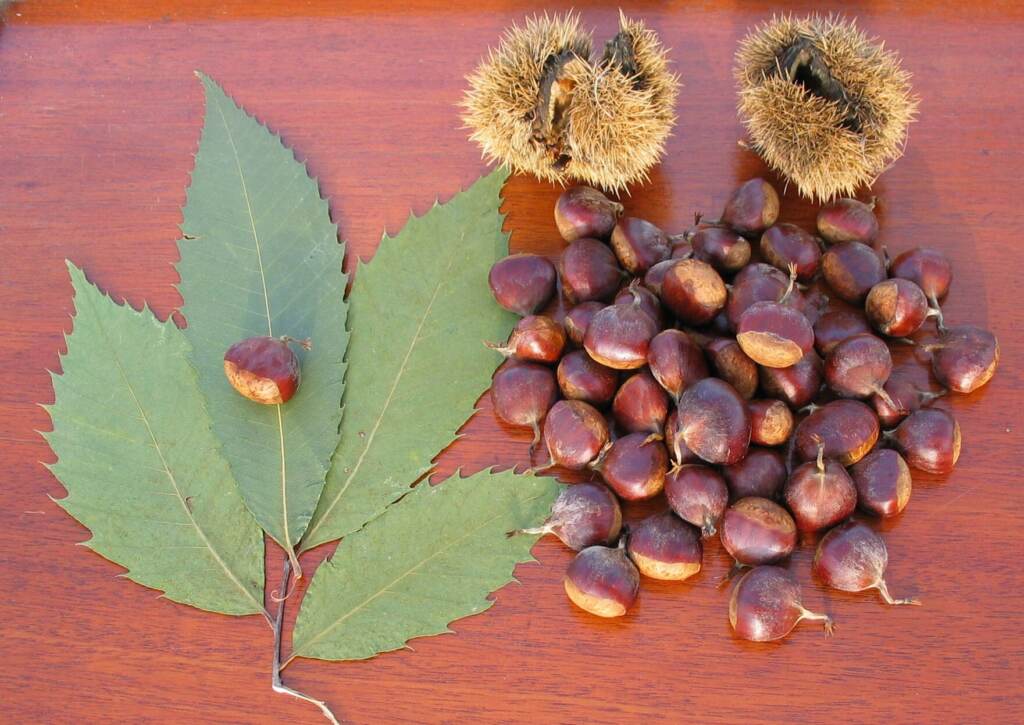
“This one obviously was a mature, beautiful one, and I’d never seen a live, mature, beautiful one,’’ he said. “I mean, because they’re almost gone. So I’m like, ‘Holy, no way.’”
Lanan took some pics and a Google Earth screenshot to mark the spot, then notified the nature society. The state botanist confirmed it was an American chestnut.
But was it pure or a cross-pollinated hybrid? Pollen samples were collected, and DNA testing was conducted at Virginia Tech.
The whole process took more than two years.
And the verdict was … pure American chestnut.
The nature society wants to nurture their discovery, in partnership with the nearby Mt. Cuba Center, White said. Treks to the tree will be included on some guided tours for the public.
“We want to protect it,” White said. “It’ll start dropping nuts in a little while. And we’ll collect them and we’ll send them to Mt. Cuba Gardens and they’ll grow the seeds. If those are pure American chestnuts, they will be reseeding them throughout the preserve.”
But should that effort ultimately prove fruitless, White says he’s satisfied with the fact that Lanan stumbled upon and recognized the veritable needle in a haystack.
“Us biologists, we’re always looking for things that are rare or uncommon. And so when you find something like this, it’s super uncommon,’’ he said. “We often say, yeah, it’s a holy grail to find these big, large chestnut trees.”
WHYY is your source for fact-based, in-depth journalism and information. As a nonprofit organization, we rely on financial support from readers like you. Please give today.



